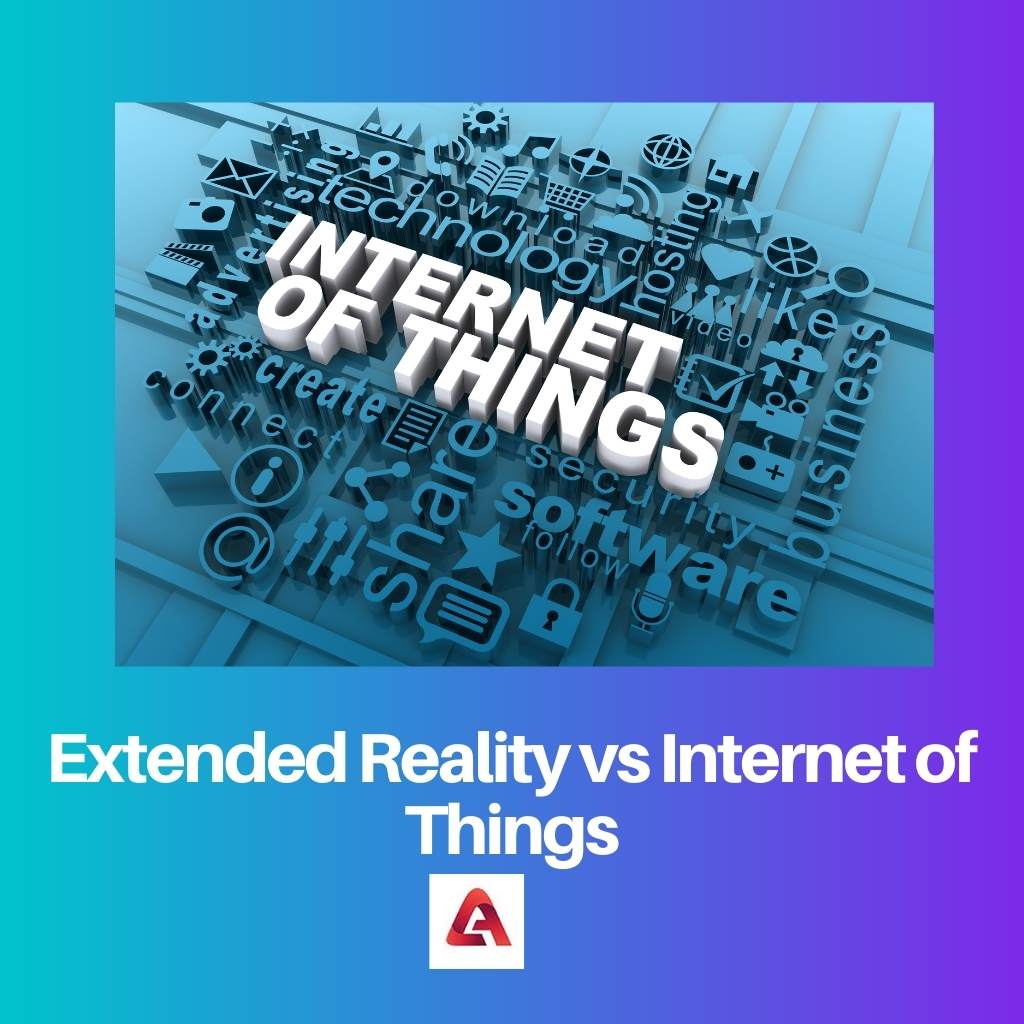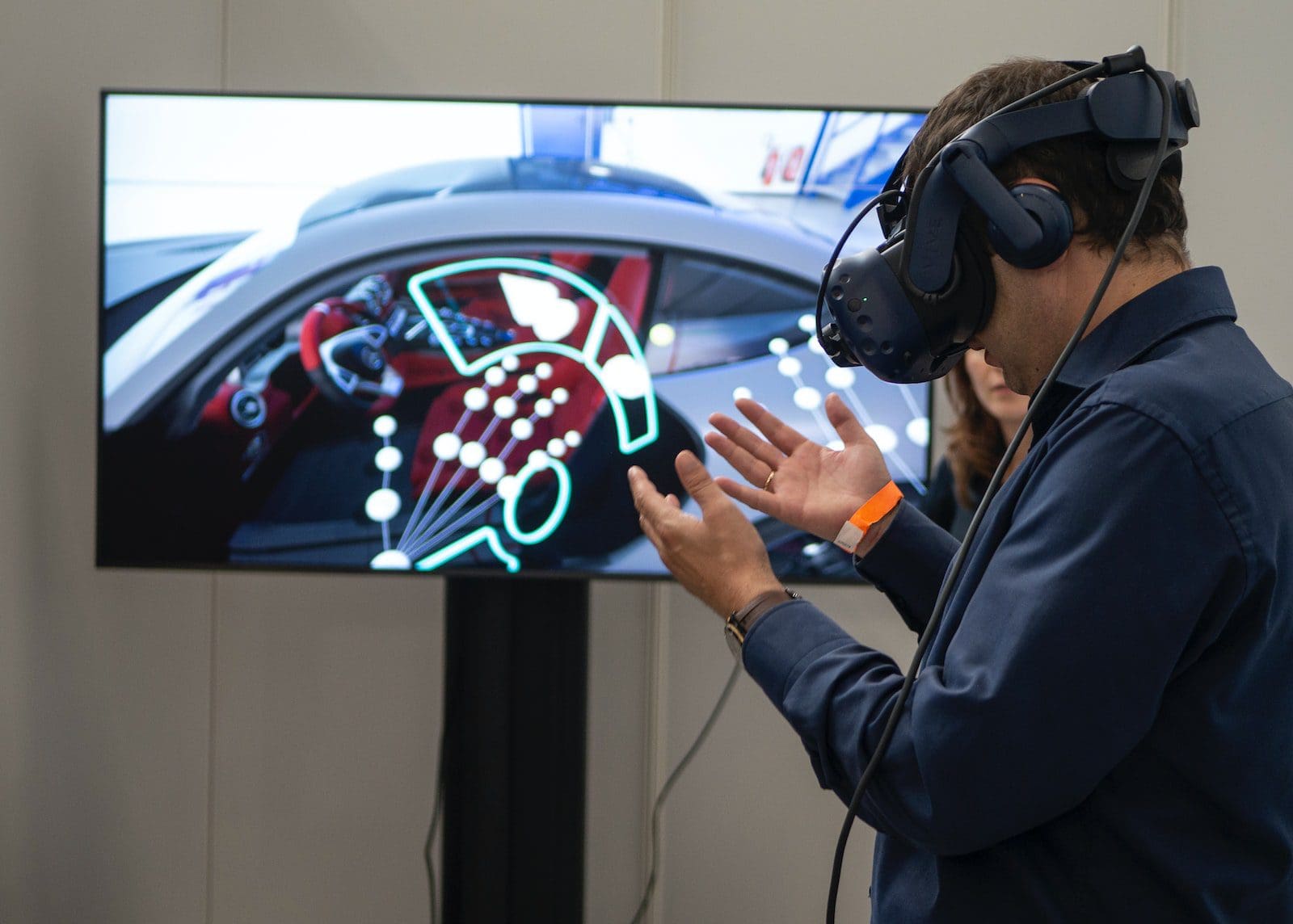Today technology has been advanced so much that only through a touch of a button your work is possibly getting done in less than 10 seconds.
Key Takeaways
- Extended reality is a technology that blends the real and virtual worlds, while the Internet of Things is a network of physical objects that are connected and can communicate.
- Extended reality uses augmented, virtual, and mixed-reality technologies to create immersive experiences. In contrast, the Internet of Things uses sensors and other devices to collect and share data.
- Extended reality has applications in gaming, education, and healthcare, while the Internet of Things has applications in smart homes, transportation, and manufacturing.
Extended Reality vs Internet of Things
Extended reality (XR) is a term encompassing all real-and-virtual combined environments and human-machine interactions, including augmented reality (AR), virtual reality (VR), and mixed reality (MR). The Internet of Things (IoT) refers to the network of physical devices connected and exchanging data via the Internet.

A summed-up term for a group of immersive technologies is said to be known as extended reality. There are 3 categories under extended reality, namely, the argument adds reality, virtual reality, and mixed reality.
The concept which helps to switch on and off with another device to connect it to the Internet is known as the Internet of Things.
Comparison Table
| Parameters of Comparison | Extended Reality | Internet of Things |
|---|---|---|
| Number of words | This term contains two words. | This term contains three words. |
| Main function | The main function of this is to pause on computer information onto the real world. | The main function of this is to configure, secure and manage the Internet of things using devices. |
| Application | Manufacturing sectors, and engineering sectors, etc., are where this term is applied. | Agricultural sectors, hospitality sectors, building a smart city and also in fleet management are where this term is implied. |
| Types | AR, VR, and MR are the types of this term. | WAN, Bluetooth, etc., are some types of this term. |
| Short form | XR is the short form. | It is the short form. |
What is Extended Reality?
There are many practical Locations where extended reality is used by a person in day-to-day life. This is mostly seen in retail marketing, where a customer has the ability to try before they buy something.
The Extended Reality gives realistic training to help soldiers and healthcare professionals to figure out their solutions in the most systematic manner when there arises a risk.
The exact technologies help in processing huge amounts of personal data about what a person does to watch a person searches in his search history.

What is Internet of Things?
In IoT, the new rule which would be invented for the future would be anything that can be connected will be connected. And to make this thing possible, the IoT was released.
This is how the Internet of Things will be used in the future to make. This not only makes things easier but also saves time, and this time can be used to do something efficiently.
The Internet of Things allows us endless opportunities and connections, which would take hours from place to place.

Main Differences Between Extended Reality and Internet of Things
- The term extended reality has 2 words in it; on the other hand, the term Internet of Things has 3 words.
- There are 3 types of extended reality which are virtual reality, augmented reality and merged reality; and on the other hand, there are a lot of types of bio protocols such as Bluetooth, WiFi, 3G, 4G, etc.

- https://www.mdpi.com/2079-9292/9/8/1272
- https://link.springer.com/chapter/10.1007/978-3-642-17226-7_15

The main differences between extended reality and Internet of Things, as well as their specific functions and applications, help distinguish the incredible potential of these technologies. The immersive and connective experiences provided by XR and IoT are shaping the present and future digital landscape.
Industries are being profoundly transformed by extended reality and IoT, as seen through the various sectors where they are applied. These technologies are driving innovation and creating new paradigms for human interaction and data exchange.
The widespread implications of XR in gaming, education, and healthcare, combined with the multifaceted applications of IoT in sectors like transportation and manufacturing, demonstrate the broad societal impact and utility of these technologies.
Understanding the distinctions between extended reality and the Internet of Things provides insight into their specialized uses. The comparison table accurately highlights the varying functions, applications, and types of these technologies.
The future prospects of IoT, including its role in creating smart cities and enhancing fleet management, are remarkable. Understanding the main differences between XR and IoT is crucial for navigating their applications and benefits.
The advantages of extended reality in supporting safety training for professionals and its potential in healthcare demonstrate the profound impact of this technology on various sectors.
The detailed comparison between extended reality and the Internet of Things conveys the immense impact and diverse applications of these technologies. Understanding the nuanced differences and specialized uses is key to harnessing the full potential of XR and IoT.
The conceptual clarity provided by the comparison table underscores the diverse and transformative implications of extended reality and the Internet of Things. The distinct functions, applications, and types of these technologies exemplify their profound influence on society and industry.
The unique capabilities of XR and IoT, as well as their applications across industries and sectors, are reshaping the landscape for human engagement and data exchange. These technologies are redefining immersion, connectivity, and the interaction between the real and virtual worlds.
The detailed comparison and detailed explanations of extended reality and IoT’s nuanced features significantly illuminate their transformative influence. The multifaceted and broad-reaching applications of XR and IoT underscore their potential to redefine the digital landscape and human-machine interactions.
The diverse and transformative implications of XR and IoT across various sectors are inspiring. Understanding and harnessing the innovative potential of these technologies is essential for driving meaningful advancements in society and industry.
The revolutionary impact and broad applications of extended reality and the Internet of Things are evident through their diverse uses and distinct functionalities. Understanding the potential of XR and IoT is integral to realizing the full scope of their transformative influence on society and technology.
The interconnected and far-reaching impact of XR and IoT on human-machine interactions, data exchange, and immersive experiences are redefining the digital landscape. The distinct functions and applications of these technologies signal a paradigm shift in various sectors and industries.
Extended reality and Internet of Things are two important technological advancements that are going to greatly influence society, especially regarding immersion, connectivity, and the exchange of data. Extended reality’s application in gaming, education, and healthcare is fascinating, and the ability to try products before purchasing through extended reality is a game-changer for retail markets.
The ability of extended reality to provide realistic training for soldiers and healthcare professionals while processing large amounts of data is remarkable. IoT’s capability to connect physical devices and exchange data over the internet will transform the future in ways we cannot yet fully anticipate.
I agree, the potential of these technologies is enormous. XR and IoT are revolutionizing the way we interact with and perceive the world. The continuous advancement in these technologies presents exciting opportunities and challenges.
The definition of extended reality and its practical applications in retail marketing is compelling. IoT’s role in enhancing efficiency and enabling seamless connectivity presents a clear illustration of the future benefits of these technologies.
The possibilities and impact of XR and IoT are truly staggering. Innovations stemming from these technologies are reshaping industries and making numerous processes and experiences more efficient.
The wide-ranging practical uses of extended reality, particularly in retail marketing and training, highlight its potential to enhance immersive experiences and redefine human interaction with technology. Similarly, the vast applications of the Internet of Things in creating smart cities and facilitating efficient mobility underscore its transformative role in multiple domains.
The insights provided by XR and IoT into the future of digital connectivity and experiences are truly enlightening. These technological advancements are facilitating rich, immersive, and efficient interactions, leading to profound societal and economic impacts.
The real-world applications and benefits of XR and IoT are staggering, spanning from retail marketing to creating smart cities. It’s critical to comprehend and leverage the unique capabilities of these technologies to drive innovation and enable novel human-machine interactions.
The potential of emerging technologies such as extended reality and the Internet of Things to process and connect vast amounts of data is astounding. These technological advancements are catalyzing novel modes of data-driven interaction and creating new paradigms for human engagement with information and devices.
The wide-ranging implications and practical applications of XR and IoT are reshaping various sectors of society, from entertainment and education to infrastructure and transportation. Understanding the core functions and types of these technologies illuminates their transformative influence.
The comparison and elucidation of extended reality and the Internet of Things provide a comprehensive understanding of their core functionalities, applications, and implications. Grasping the nuanced differences between XR and IoT is essential for appreciating their transformative potential across diverse sectors.
The nuanced and diverse uses of XR and IoT underscore the broad impact and transformative potential of these technologies. The ability of XR to provide immersive training and IoT to enable seamless connectivity are reshaping industries and interaction paradigms.